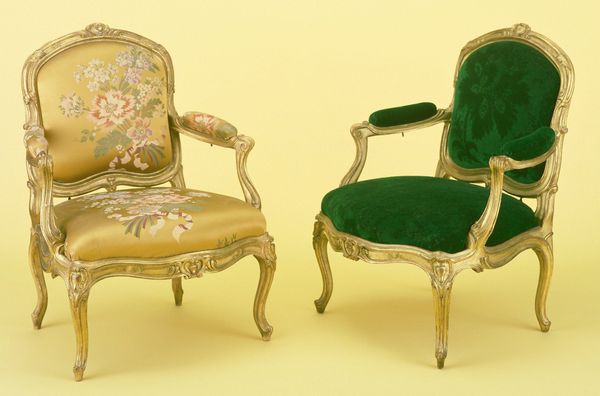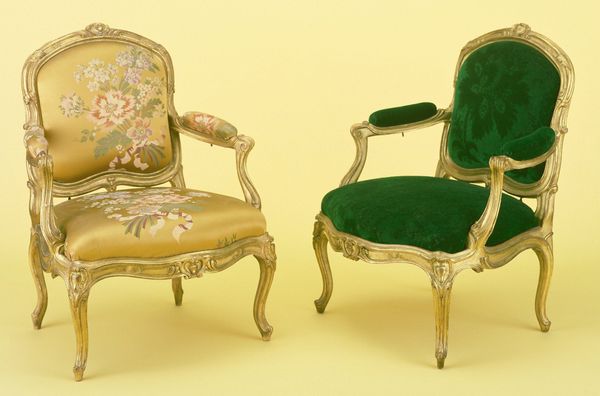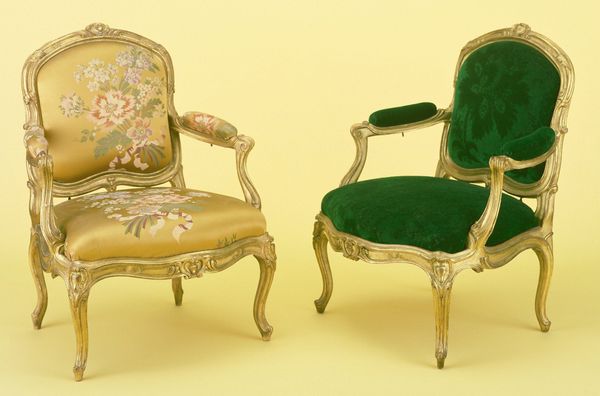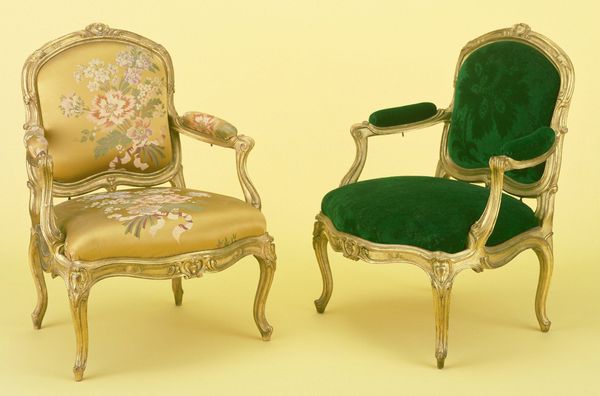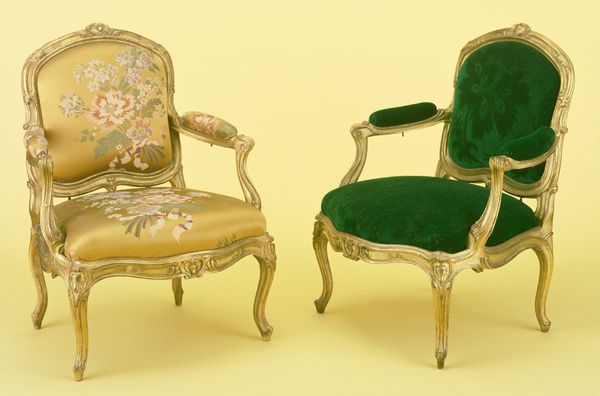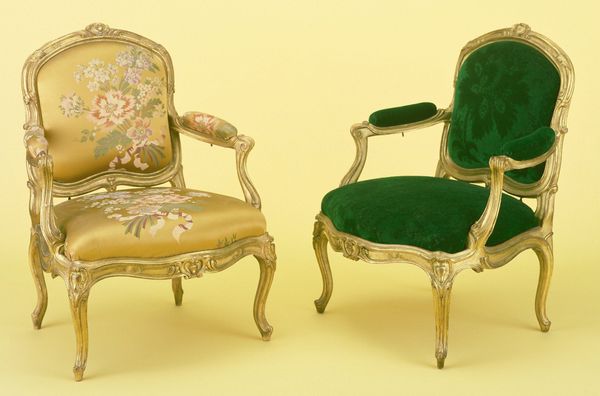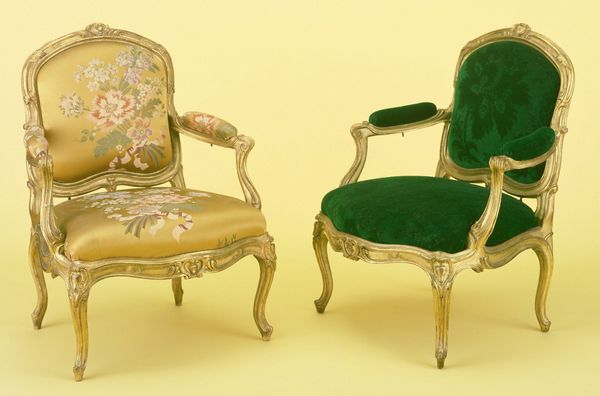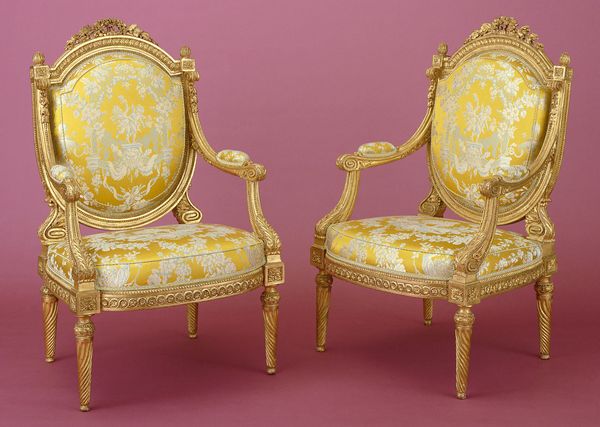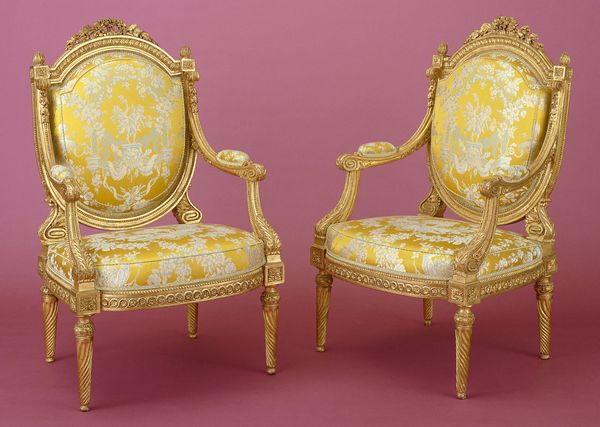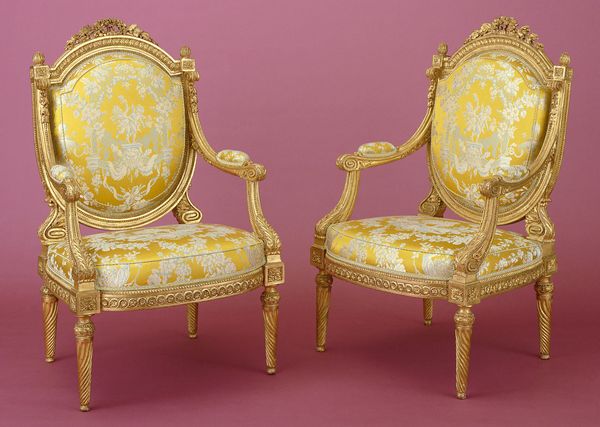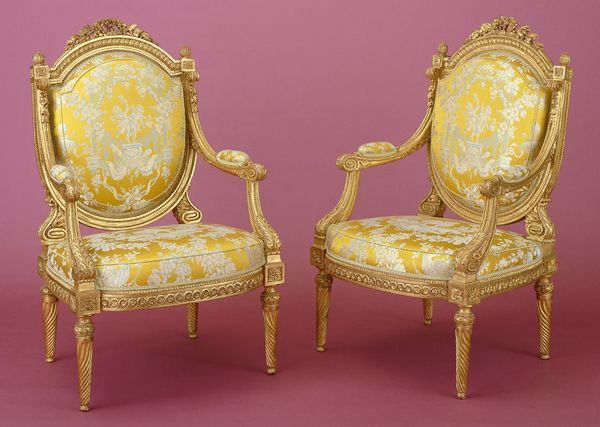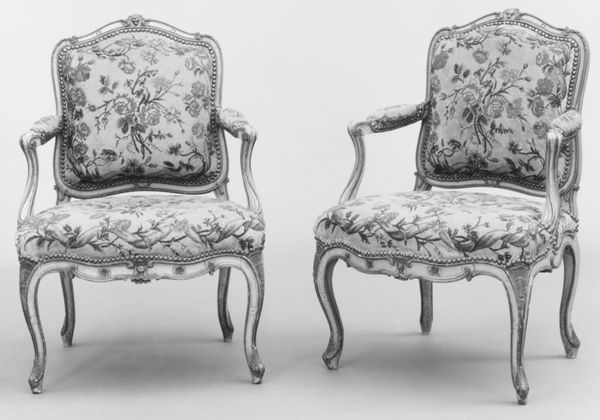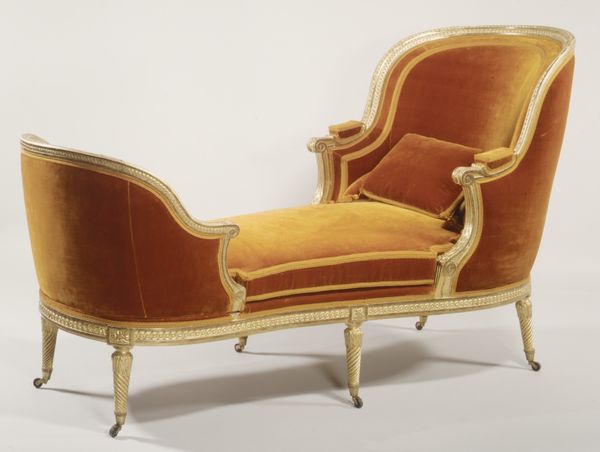
Dimensions: 37 1/4 x 24 x 24 in. (94.62 x 60.96 x 60.96 cm)
Copyright: Public Domain
Editor: Here we have a side chair, crafted around 1772, presumably by William Gordon. It looks to be primarily wood, with some elegant carving. It's hard to imagine sitting in it – it appears so ornamental! What strikes you about this piece? Curator: Well, first, consider where this chair would have lived. Not as an isolated object, but in a room, perhaps a grand salon, filled with similar displays of wealth and taste. This chair embodies Rococo style, imported to England but altered by local traditions. How does the carving strike you, in relation to other examples of rococo you have seen? Editor: I notice a sense of restraint, maybe less overt flamboyance compared to some French examples I have seen. Curator: Exactly. The social context is vital here. England in the 1770s had a powerful merchant class, eager to display their affluence, but within certain social parameters. Ostentation, like in France, was frowned upon by some segments of the elites. The imagery and construction of this chair is designed to express that power and prestige, and also suggest an adherence to ideals of British craftsmanship. It becomes not merely furniture but also a statement. And the placement within an interior room takes on performative social dimensions for visitors to the space. Editor: So it's about subtle signaling. It seems almost subversive that even a chair could hold so much political and social information. Curator: Absolutely. Everyday objects became key ways that status was communicated and constructed. Editor: I never would have thought of a chair as such a potent symbol before. It shows how even utilitarian items can be packed with historical context. Curator: Precisely, and that's why we examine such pieces—to unlock those social narratives and expand our ideas of the political weight of art.
Comments
No comments
Be the first to comment and join the conversation on the ultimate creative platform.

